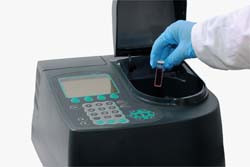Intricacies of catalysis
A catalyst reversibly binds one or more reactants, facilitating the reaction without being consumed by it. The catalyst is then free to do its match-making over and over again, speeding a reaction rate and amplifying production. The lock – and – key mechanism strives for high specificity as the reactants face competition from other chemical species structurally similar to them. In the search for less expensive catalysts for promising eco-friendly fuel cells, understanding this competition is key. A new EU-funded study employed advanced in situ infrared/Raman spectroscopy to evaluate local structure and reactivity at novel palladium (Pd)-based cathodes with the project 'Electrocatalysis on model interfaces' (ELCAMI). Scientists compared four types of Pd-based platforms for low-temperature polymer electrolyte membrane fuel cells (LT-PEMFCs) as an alternative to conventional and expensive platinum. They focused on the oxygen reduction reaction (ORR) at the cathode. Their studies opened a new window on the role of alcohol (-OH) adsorbates and surface oxides on ORR kinetics. These species compete with molecular oxygen for active catalyst sites. With their in situ studies of single-crystal surfaces, investigators made major breakthroughs in understanding the fundamental oxidation and reduction processes in electrocatalysis. Their results shed much-needed light on the electrochemistry of Pd-based cathodes for cost-effective LT-PEMFCs. In a broader context, researchers have demonstrated the feasibility of single crystal in situ infrared/Raman spectroscopy experiments in elucidating structure-sensitivity relationships in catalysis. ELCAMI’s technology and associated guidelines for experimental measurements of catalysis promise to usher in a new era of discovery and innovation. Cost-effective clean energy for a brighter future is one step closer.







